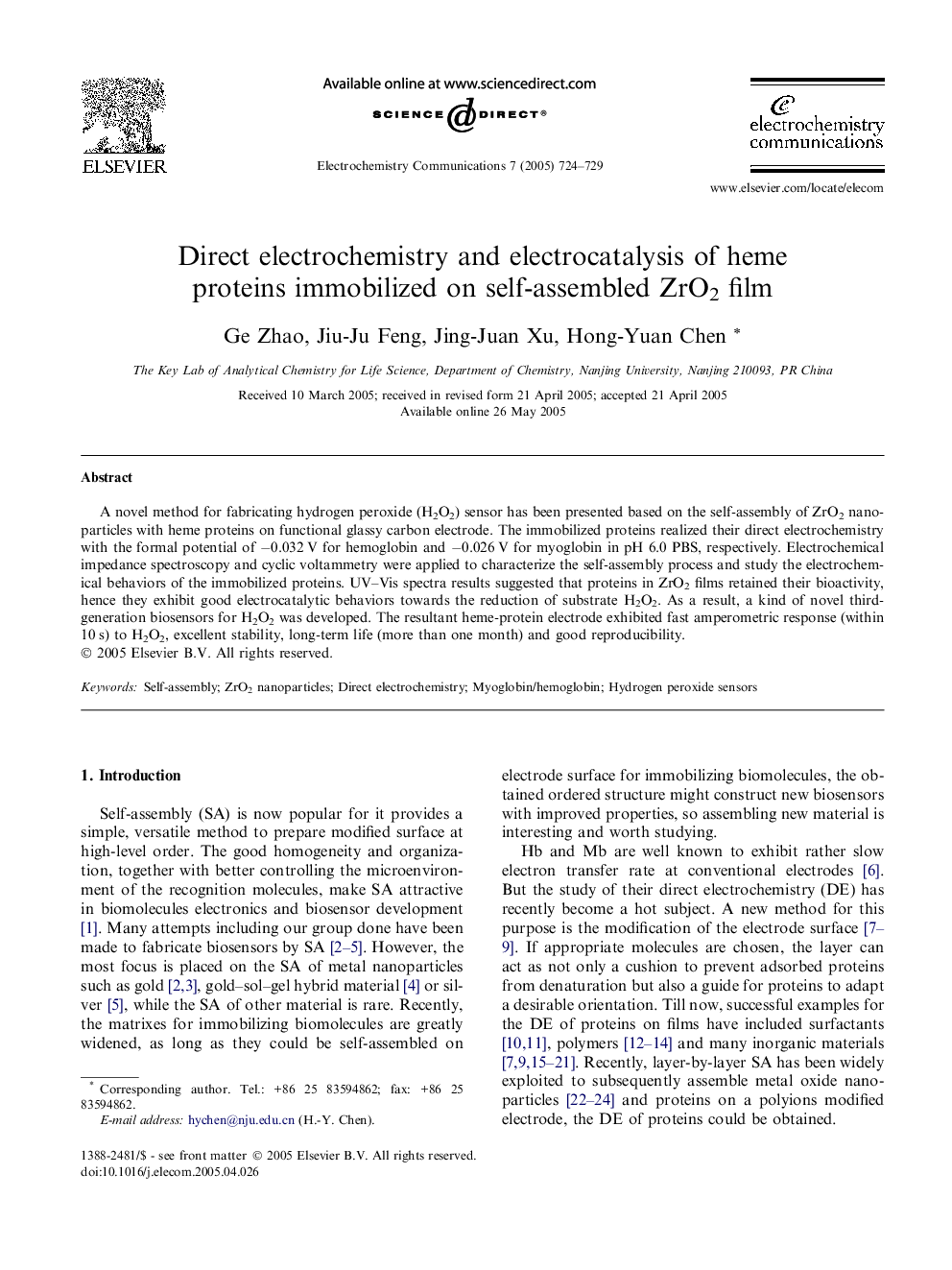| Article ID | Journal | Published Year | Pages | File Type |
|---|---|---|---|---|
| 10267157 | Electrochemistry Communications | 2005 | 6 Pages |
Abstract
A novel method for fabricating hydrogen peroxide (H2O2) sensor has been presented based on the self-assembly of ZrO2 nanoparticles with heme proteins on functional glassy carbon electrode. The immobilized proteins realized their direct electrochemistry with the formal potential of â0.032Â V for hemoglobin and â0.026Â V for myoglobin in pH 6.0 PBS, respectively. Electrochemical impedance spectroscopy and cyclic voltammetry were applied to characterize the self-assembly process and study the electrochemical behaviors of the immobilized proteins. UV-Vis spectra results suggested that proteins in ZrO2 films retained their bioactivity, hence they exhibit good electrocatalytic behaviors towards the reduction of substrate H2O2. As a result, a kind of novel third-generation biosensors for H2O2 was developed. The resultant heme-protein electrode exhibited fast amperometric response (within 10Â s) to H2O2, excellent stability, long-term life (more than one month) and good reproducibility.
Related Topics
Physical Sciences and Engineering
Chemical Engineering
Chemical Engineering (General)
Authors
Ge Zhao, Jiu-Ju Feng, Jing-Juan Xu, Hong-Yuan Chen,
